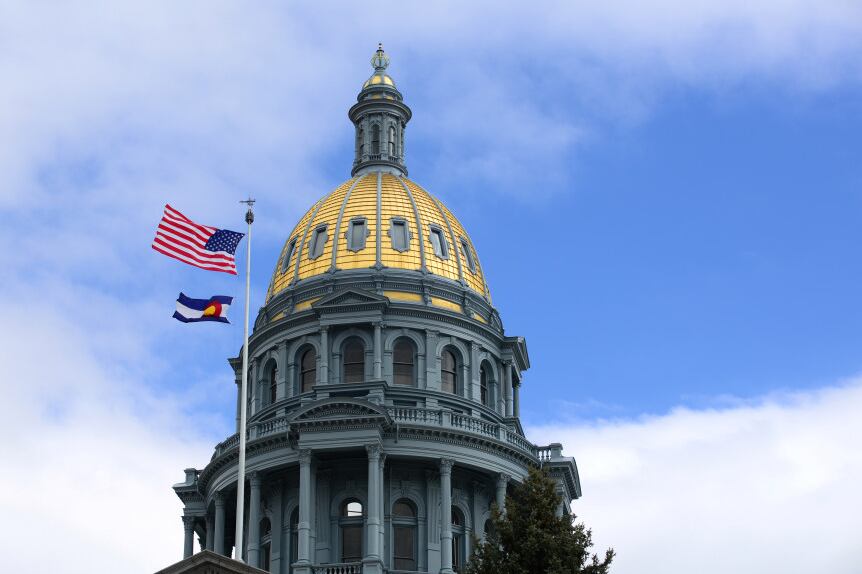Colorado lawmakers are staring down $3.3 billion in cuts heading into next year, a 25% dip in revenue that is sure to touch every aspect of state government.
The revenue projection presented to the state’s Joint Budget Committee on Tuesday will require severe cuts to balance the budget, including slashes to state education spending. The economic recession is also expected to have long-ranging impacts on how the state spends money on K-12 and higher education.
“Getting back to the pre-COVID economic levels of activity, it’s going to take years to get back up to that level,” said Kate Watkins, the state’s chief legislative economist.
Lawmakers will need to balance $895.8 million in revenue reductions for the current fiscal year, according to the presentation. Into the next year, the state anticipates a $2.42 billion decrease in revenue.
The scenario is worse than preliminary estimates predicting a $2 billion to $3 billion shortfall.
The contraction is twice as large as that of the Great Recession, Watkins said. Revenues, including taxes on oil and gas, property, sales and income, have shrunk because of the coronavirus closures.
“No industry has been left untouched in the last month and a half,” she said.
The dire economic picture won’t be offset by federal aid. Colorado school districts expect to share $120 million in coronavirus-related stimulus funds, while half of the $144.5 million allocated to the state’s public higher education must be spent on student assistance. School board members, college presidents, advocates, and lawmakers are calling for additional federal support to mitigate the damage.
Advocates for education and fiscal reform in Colorado also have pressed the legislature to declare a fiscal emergency and enact an emergency tax to bring in more revenue. Doing so would require a two-thirds majority and attracting support from Republicans who are deeply skeptical of the idea.
The cuts to education needed to balance the budget will likely be wide-ranging.
The process of making painful cuts began last week, as lawmakers worked to bring down spending ahead of Tuesday’s projection. Even then, some lawmakers choked back tears as members of the Joint Budget Committee withheld funding from a host of grant programs that covered teacher training, support for students of color taking advanced math classes, Advanced Placement exam fees for students from low-income families, and more.
Lawmakers even scraped tens of thousands of dollars from old funds that paid for now-defunct programs, a process legislative analyst Craig Harper compared to “emptying out the couch cushions.”
But to balance the budget, lawmakers now need to tackle high-dollar decisions that they delayed last week. Those include whether to cut base education funding with across-the-board reductions, whether to tinker with the school finance formula that determines how much money each district gets, and whether to hold back money for full-day kindergarten, which the state covered for the first time this year.
Gov. Jared Polis campaigned on making full-day kindergarten free to families, and the passage last year of legislation that covered the cost capped an ambitious education agenda that is now endangered.
Immediately after hearing the forecast, Joint Budget Committee members tentatively agreed to move $60 million out of the BEST program, which pays for construction projects in cash-strapped districts, to begin shoring up education funding.
COVID-19 will continue cutting into education spending. As tax revenues from commercial properties plummet, they’ll trigger constitutional provisions that will also drag down residential assessment rates. Local school districts could lose roughly $490 million in the 2021-22 fiscal year, some of which the state would be required to backfill, at least under current law.
Lawmakers last week also slashed budgeted increases to higher education spending next year, as well as numerous grant programs.
Budget committee staff analyst Amanda Bickel said she took a “last in, first out” approach in identifying recently enacted programs for cuts. One such cut to the Colorado Kickstarter program, which began this year and grants $100 to Colorado newborns, allowed the state to save about $12 million next year.
The state spends about 9.1% of its budget on higher education; colleges raise most of their revenue from tuition. In past recessions, the state has balanced its budget on the backs of public colleges and universities.
There are worries from college leaders and budget hawks, however, that cuts to college and university spending during this downturn could cause increased hardship.
Student enrollment is projected to decrease overall. Raising tuition might turn away students already on the fence about enrolling because they feel apprehensive about remote instruction. Some officials also fear that families are less willing to absorb tuition hikes after years of increases.
The state is expected to allow a 3% overall increase for tuition, far from what universities would need if lawmakers make deep incisions into higher education.
In the long term, even if deep cuts aren’t made in the 2020-21 year, lawmakers could decide to slash state spending on college and universities to balance the budget in the future, when enrollment grows.





